The catering industry grows more diverse with each passing year. Those of you reading this article are not just independent operators, but also restaurateurs, food truck owners, purveyors of pop-up events, venue owners, executives, salespeople, marketers, chefs, prop builders, and floral designers. In this past year, some of you catered events related to the Super Bowl, college graduations and open houses, annual Christmas parties, car and motorcycle dealership events, company BBQs and picnics, store grand openings, art museum galas, political fundraisers, lavish weddings, and military balls—and that’s just the tip of the iceberg, so to speak. This diverse industry offers the true definition of hospitality, a party well planned and executed.
For the past three years, Catersource magazine has conducted a survey of its readership, asking a wide swath of questions related to business practices, types of services provided, number of events serviced, types of cuisine most requested, and more. Beyond that, Catersource as a company—a producer of conferences and tradeshows for the catering and events industry—is able to track the trends and the needs of this industry in a way you may not have the time or wherewithal to do.
Looking at the rise and fall of trends and statistics over a specific time period is very telling. Here is what truly stood out for us.
Your business growth
While last year I reported that 75% of survey respondents had already seen an increase in their businesses by mid-year (an increase of 3% over the prior year); this year the number dropped quite significantly to just over 66%. Was it a reaction to the turmoil of the election? The Washington Post noted in August that, “isolating the election’s impact on the economy is difficult. It’s just one in a series of speed bumps…” But many consumers could say they had election jitters, causing hesitation when reaching for the credit card.
Additionally, those companies who projected positive-to-significantly-higher-growth in 2017 also declined in percentage, though much less so. Percentages dropped to 77.18% (similar to 2014) over last year’s 80%.
This year, I asked a couple of new questions on the survey as well. For example, querying our readership about positive and negative impacts upon business profit margins, respondents selected “increased consumer spending on social events” as the most significant positive impact to business, and “increased competition from external, non-traditional caterers such as restaurants, hotels, QSR, and fast casual establishments” as the biggest negative related to decreased profitability.
Next, regarding competition from nontraditional caterers, respondents overwhelmingly answered that, “competition has intensified. I am looking for ways to set my company apart from those who are encroaching on my business prospects.” (41.72%) However, only 14.41% said that they have actually lost business to nontraditional caterers.
I should note that one particular area of increase in 2016 that we feel will intensify in 2017 is corporate and drop-off catering.
The case for corporate
According to Heather Thompson, PR manager for Dinova (a business dining marketplace), catering to business clients is definitely on the upswing. “Based on our marketplace data,” Thompson says, “we’ve seen a 10% increase in business catering for all dining segments, in 2015 to 2016 year-over-year.”
Dinova divided its researched numbers as follows:
• Casual dining has the largest increase at 14% YOY
• Fast-casual has seen an 11% increase YOY
• QSR has also shown an 11% increase YOY
• Fine dining shows a smaller increase at 3% YOY
“It is clear,” says Thompson, “that the increase in catering spend is being driven by the lower ticket segments. That makes sense, because we are seeing more and more companies ordering meals from more affordable locations, like Panera, etc. And, fast casual is our fastest growing segment overall at 33%. Additionally, we’re estimating that 55% of fast-casual restaurant spend in our business dining marketplace is catering.”
But there’s more, says Thompson. “Our national restaurant partners are also seeing these trends. In fact, many of our casual and fast casual brands are making business catering a top priority for 2017. For example, P.F. Chang’s will be focusing on their family style catering efforts in the New Year. And, Border Grill, on the West Coast, is doing some unique things with customized catering options to help create more curated event experiences.”
This can be concerning for those traditional caterers who feel, as noted above, that competition from nontraditional caterers truly has intensified.
Corporate events are huge business, says Dan Berger, Founder & CEO, Social Tables. “Face-to-face meetings are occurring more frequently than ever before, which means meeting planners are being asked to take on bigger roles and execute events at a faster turnaround time. Corporations believe in events to educate, to bring people together—and most importantly—to drive revenue. Events can have a high ROI for businesses, and corporations are realizing that. Where the events go, so too goes catering.”
Michael Rosman of The Corporate Caterer agrees that the corporate industry is an untapped well of profitability. “It is a $3 billion per year industry,” he says, almost one-third of the catering industry. “There is a lot of revenue up for grabs in the corporate drop-off market—Monday through Friday no nights, no weekends. If you are looking for that additional 10 to 15% (or more) in business to put your catering operation or restaurant over the top, it is there for the taking.” But you must have a consistent product, he says. “It is the cornerstone of repeat business.”
Consistent product also means a consistent look, a boon to suppliers of disposable products. “With the rise of corporate catering (drop off especially), we’ve seen the need for stylish disposable products rise alongside of it,” says Al Madonna, VP of Business Development, WNA. “With drop-off catering, caterers are leaving more than their food—they’re leaving their brand. It’s important that they present and elevate their brand with an upscale presentation of tableware products that complement the menu.” Essentially, a caterer should not sacrifice style for convenience.
Editor’s note: Michael Rosman and Michael Attias will be teaching a half-day Quick Serve Restaurant/Drop Off session at Catersource 2017 on Wednesday, March 15. If you want to learn more on how to maximize your potential for added drop off dollars, this hard-hitting session is the resource you need to succeed.
Ongoing issues
Staffing and retention remain a huge point of contention; training sales staffs to close clients and combatting off-season slump are front-of-mind. Finally, putting together appropriately priced proposals for clients is considered to be the most important for the continued prosperity of those companies surveyed (38.71%) followed by having a skilled workforce (22.15%).
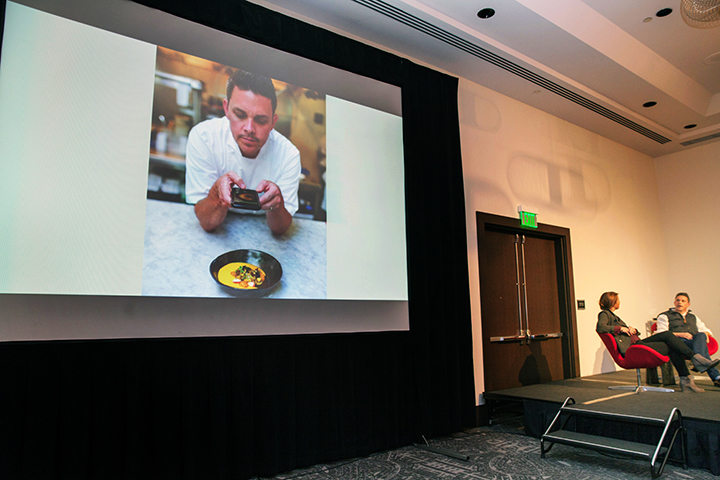
Spoon and Stable Chef/Owner Gavin Kaysen used to shoot his own Instagram posts but recently hired a social media coordinator to increase the restaurant’s presence, he said at a recent appearance in Minneapolis. Photo: Robb Long
Your business persona
The (social) power of the plate
In an early 2016 episode of Top Chef, the surprise judge was Instagram “celebrity chef” Jacques La Merde, the buzzed about nom de plume for Executive Chef Christine Flynn of Toronto, whose true identity was also revealed on that episode. For the challenge, the chefs did not have to create anything tasty or innovative (as La Merde had been doing online for fun). Indeed, the dish, comprised of junk food the chefs had been supplied, just had to be the prettiest. Judged by the public, this chef challenge was won by garnering the most Instagram “likes” regarding his or her plate composition.
A pretty plate is a photo opportunity in a land where most everyone has a camera handy, which in turn leads to a consumer “check in,” a tweet, an Instagram shot, a Facebook post.
The rise of food photography and documentation of near every bite has raised “camera cuisine” to swoon-worthy heights. After all, the photo generally goes out before a single bite has been taken. But then there is Yelp, where flavor and service is paramount in a consumer’s review.
So here we are: we must be very aware that food is art—but it also must be trendy, tasty, and served in a manner pleasing to the guest.
As for the ubiquitous #hashtag, NBC News mentioned that we officially entered the era of too many hashtags…over three years ago. But this metadata tag is the equivalent of another group to belong to, a way to find relevant content on a topic of interest (such as #chefsofinstagram or for the purposes of a certain upcoming show, #CS2017), even a way to start a movement (#nowastechef). It is to our advantage to have visible hashtags at events—printed on napkins, scrawled upon chalkboards, projected onto a wall—is order to capture new followers and influencers.
Rachanee Teipen of Thomas Caterers of Distinction, Indianapolis, IN, is a master at plating beautiful, tasty meals. Here, she prepares for a cookbook photo shoot in November 2016. Teipen will be teaching a plating class at The Art of Catering Food in March 2017, “Plate Design. The Difference Between Good and Great.” Photo: Alex Quijano
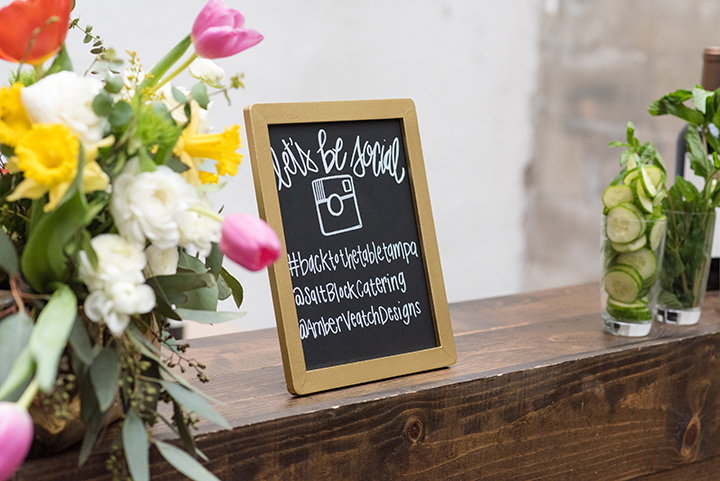
In a July/August Catersource article on the rise of pop-up dining, we noted that a visible hashtag enables guests to market a businesses’ product to their own social media followers. Photo: Caroline & Evan Photography
Food focus
Depending upon the region, food trends will vary. Yet, regional movements gain traction and spread, soon becoming overarching national food trends. Let’s look at a few regional movements on the cusp of going national, and then we’ll briefly look at the important trends your clients may not even know they want—until they see it on your menus.
Pre-colonial fare
In the north, for example, there is a developing movement in Native American cuisine. Minneapolis caterer Sean Sherman, with his off-premise company, The Sioux Chef, is leading the charge. Featuring regional indigenous foods from the Minnesota and Dakota territories but within a modern culinary context, he prioritizes buying foods from local native producers. “Our foods represent the flavors, histories, and cultures of the land we stand on,” he states. This includes wild rice bowls with squash, cranberries, and fresh greens, with proteins such as bison and turkey; teas made from cedar and maple; and walleye filet with sumac and maple sugar.
Sherman’s concept is so popular, he added a food truck (Tatanka Truck), and just blew a Kickstarter campaign out of the water in Q3 of 2016 to open a brick and mortar space in Minneapolis (due Q1 2017). In the process, his concept became the “most backed Kickstarter restaurant ever” and landed him on the front page of the New York Times’ food section in August 2016.
But Native American food traditions are also distinct by region. In a November article in National Geographic discussing the rise of Native American and pre-colonial cuisine, it was acknowledged that a tribe from the Pacific Northwest will, for example, have traditions related to the harvesting of salmon, while a Navajo on the plains of mid-America would have never seen that type of fish.
What this distills down to is an overarching consumer movement toward authentic and special food experiences; a Madonna-curve upswing of what started as a trend in organic fare, to local fare, to farm-to-fork fare, to dirt-to-plate or root-to-stem fare…all wrapped up in an effort for people to know and understand from where their food hails.
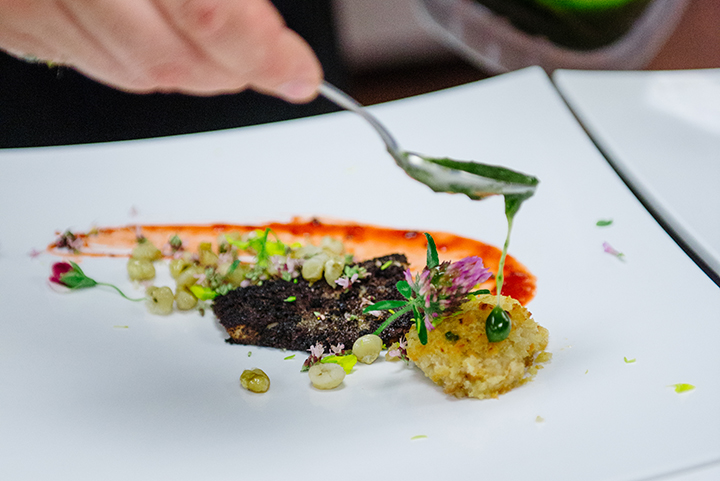
Sean Sherman’s blackened walleye filet with sumac and maple sugar, a white bean and smoked walleye croquette, toasted hominy, a raspberry and rose hip sauce, dandelion/sunflower oil, and seasonal flower blossoms (pea, broccoli, and red clover). Photo: Becca Dilley for The Heavy Table
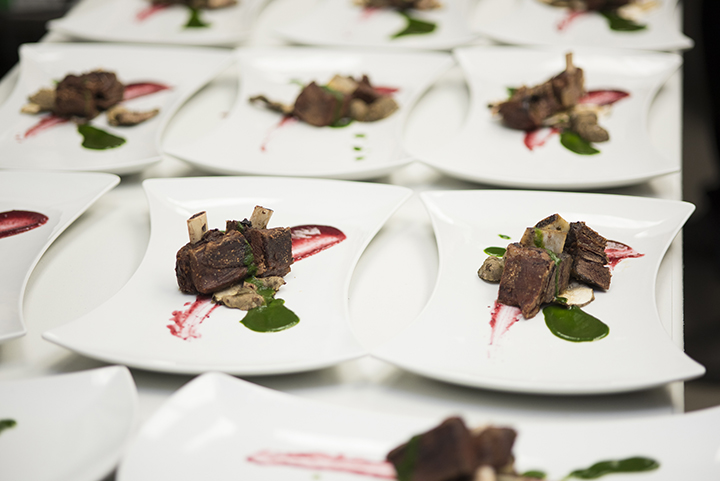
Sean Sherman’s cedar braised bison with wojapi (a berry sauce) and sunchokes. Photo: Heidi Ehalt Photography
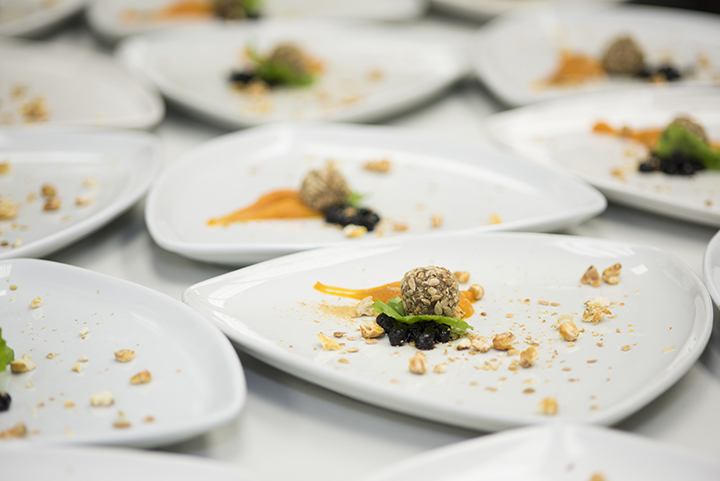
Sean Sherman’s maple bruléed squash with native seed mix and rehydrated blueberry. Photo: Heidi Ehalt Photography
Vegan butchers in space
You could conclude that when people are paying for an experience, they will want what they don’t have at home, or at least can’t create well at home. This conclusion could easily apply to the nation’s first vegan butcher shop, in Minnesota. The Herbivorous Butcher, after debuting in a farmers market stall, opened its first brick and mortar (also funded by a Kickstarter) in early Q1 of 2016 by brother and sister team Aubrey and Kale Walch. Offering 100% vegan fare in the form of meat-free meats and dairy-free cheese, this single location company has seen sizeable growth, which echoes growing national consumer interest in plant-based diets. In less than a year, the company has expanded offerings nationwide, shipping to consumers all over the U.S., as well as restaurants in Arizona, New York, and Ohio, among others, says Marketing Communications Coordinator Laura VanZandt. The company is also working with NASA, experimenting with “space dirt” aka Mars Regolith Simulant to see if they can grow carrots and zinnias, as well as testing meals for the astronauts who will have a two week simulated Mars mission in the Utah desert, summer 2017.
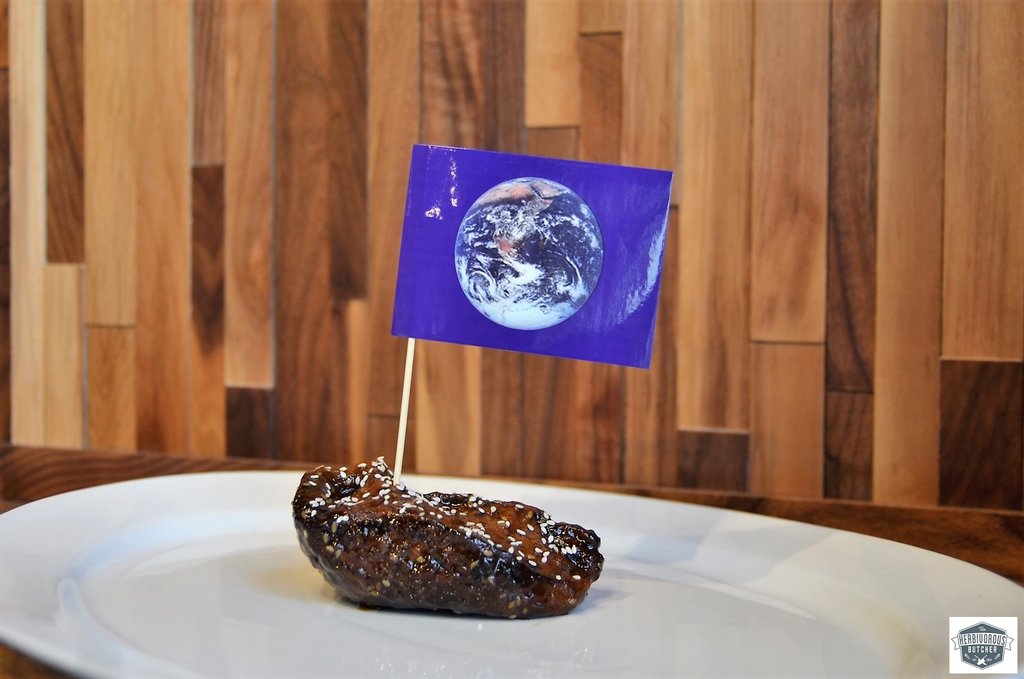
Vegan butchers in space!
“Plant-based everything” is how the buyers of Whole Foods Market listed their top picks for 2016, saying, “This year’s plant-forward movement will be all about harnessing the power of plants—from quinoa protein in hair care products to vitamin-rich veggies in frozen dessert pops.”
International food and restaurant consultants Baum + Whiteman state, “We’ve reached a tipping point for vegetables. They’re pushing animal protein to the side of the plate…or entirely off it.”
Additionally, some of the very top Google searches reported in its 2016 Food Trends report included these words: vegan cheese, vegan mac and cheese, vegan ice cream, and vegan chocolate.
If you were at The Art of Catering Food in August, you would have met Washington, DC Chef Todd Gray, whose plant-based menus are the darlings of the city. Go to catersource.com for an interview—and recipes.
Food waste reduction & global consciousness
On the West Coast, Chef Keith Lord, The Wild Thyme Company, started the #nowastechef movement, and detailed in our Nov/Dec issue in 2016 his quest to eliminate the scrap food waste he saw in his own kitchen and elsewhere.
Up the California coast, consumers can turn to San Francisco’s Imperfect Produce: a subscription delivery service for “ugly” food. The company estimates that about one-fifth of all fruit and vegetables are consigned to the dump because they do not conform to the industry standard of perfection. “These fruits and veggies taste the exact same on the inside,” says the company, “but look a little ‘wonky’ on the outside.”
The signs of a growing movement to reduce food waste are being seen around the globe. Again, I point to a Kickstarter campaign, “Food for All: Help, Save, Eat” that, at the time of this writing, had six days to go. An iPhone app with a mission to build social awareness regarding food waste, it connects consumers with (mostly) restaurants that have end of the evening food that would otherwise be tossed at close. This might be the last few cups of soup, or half of a sold-by-the-slice pizza; maybe the last two cassoulets baked but not purchased. The app locates nearby purveyors who have set prices on remaining food 50 to 80% lower than the original restaurant price; you place an order and pick up the food right before closing.
Or, you can donate left over prepared food, such as the efforts of New England NACE.
Finally, in not only the food but also the products chosen, you can look to companies that provide biodegradable and recyclable products, you can subscribe to the “100-mile” diet of obtaining your food, as well as purchase from those that keep global consciousness within their efforts as a company. Says Thaddaeus Smith, Director of Communications, Sterno Products, “The development of efficient and ‘green’ products is essential to the growth of our business. We share our customers’ commitment to the environment and continually strive to improve our manufacturing and marketing practices to reduce our impact on the earth” in an effort to be more environmentally responsible and sustainable.
How are you positioning your company regarding food mindfulness and waste reduction? If you don’t have a statement or aesthetic yet, 2017 is the year you should implement it.
Trend round-up
Chef as showman: Interactive chef stations are taking on more than just food: companies are also finding it advantageous for their chefs to be educators and showmen as well. Whether talking about the food being served or discussing the benefits or locality of a particular product, caterers are finding that they need someone who can cook quickly, provide delicious results—and can engage and educate guests. Said Chef de Cuisine Bryan Davis about an Iberico ham station at the Art of Catering Food in August, “It makes people happy when you interact with them.”
Turmeric: As we see every year, a new spice begins to push its way to the front of the pack. The spice of 2017 will be turmeric—and it’s a good one. This powerful herb, not just tasty, also has wide-ranging health benefits, from being hailed as an anti-inflammatory, to potential for decreased cancer risk, improved cognitive function, and lessening of certain symptoms of arthritis. Consider using it within curries, chutneys, and rice dishes.
Sustainability: Concern for sustainability in our food supply and for the world in general is a live issue that caterers must address. Regarding the seafood crisis, says Carl Sacks, Executive Director of Leading Caterers of America, “There is now almost universal agreement that many fisheries are in crisis or are in danger of disappearing altogether. This is due to a combination of overfishing to feed a world that has billions of more consumers; climate change which has, for example, had a severe negative impact on Alaskan Wild Salmon; and from lack of a true enforcement mechanism for deep sea fishing rules.”
Sacks reports that caterers have responded by promoting farm-raised fish (which have gone from being an environmental catastrophe to being a last defense for maintaining some fish stocks at a reasonable level), and taking certain types of threatened fish off their menus. For example, Sacks mentions, “in the 1990s Chilean Sea Bass (actually Patagonian Toothfish) was the caterers’ white meat fish of choice for high-end events because of ease of preparation. Once it became apparent that this particular seafood was threatened, many caterers took it off their menus altogether.”
Honey & the rise of urban beekeepers: On the East Coast, Russell Morin, of Russell Morin Catering & Events, Attleboro, MA, played devil’s advocate by first saying that “honey is not a trend, as it has been around for millions of years.” However, the “honeybee population has been decimated by pesticides, air pollution, parasites, and loss of flowering plants. Chefs see this as their duty to rebuild the population and also to provide organic honey in dishes to their guests.”
Salt and salt block cooking: Keep an eye open as this slowly emerging trend takes on steam in 2017.
Finally, your 2017 buzzwords are: Jackfruit; cauliflower rice; pho; cultural deep dive menus; small plates, mini desserts, & bite-sized snacks; pasta (yes—pasta is appearing, along with a lovely trend toward Italian fare); clod heart; low ABV; amaro; rosé; all day breakfast; customization; lardo; and classy comfort food.
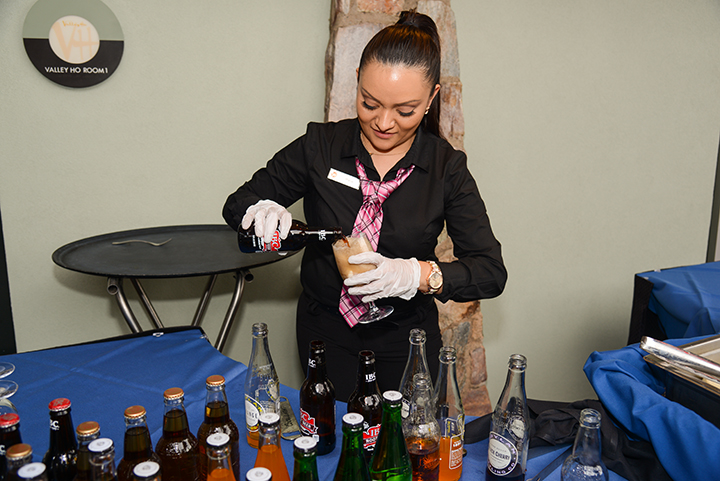
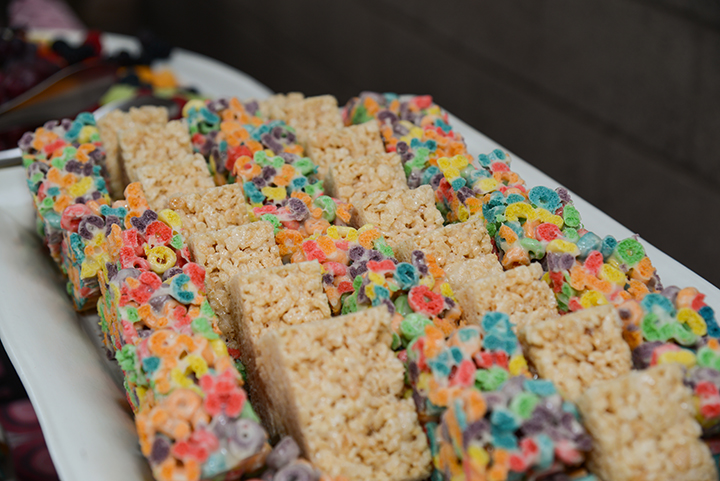 During a meeting break, the Leading Caterers of America gushed over the “After School Special” spread put together by the Hotel Valley Ho in Scottsdale, AZ. A combination of Retro Cereal Bars (featuring Froot Loops and Rice Krispies), Ants on a Log, Ice Cream Floats with specialty sodas, open faced Nutella & Banana Tea Sandwiches topped with crushed hazelnuts and English Muffin pizzas, these quick and small items were great grab ‘n go items, marrying comfort with class.
During a meeting break, the Leading Caterers of America gushed over the “After School Special” spread put together by the Hotel Valley Ho in Scottsdale, AZ. A combination of Retro Cereal Bars (featuring Froot Loops and Rice Krispies), Ants on a Log, Ice Cream Floats with specialty sodas, open faced Nutella & Banana Tea Sandwiches topped with crushed hazelnuts and English Muffin pizzas, these quick and small items were great grab ‘n go items, marrying comfort with class.
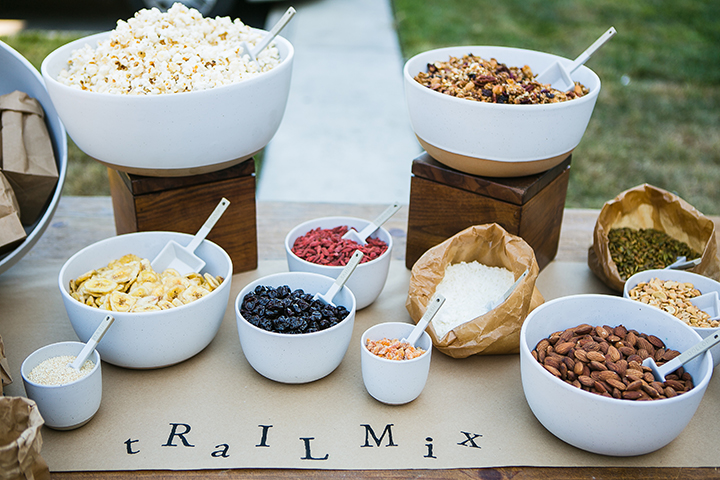
Customization continues to be a buzzword for 2017. Here, 24 Carrots displays a make your own trail mix station.



